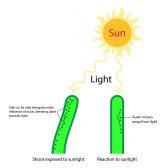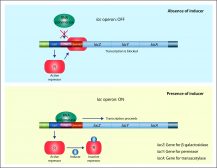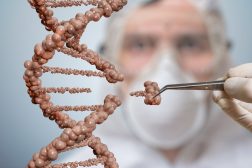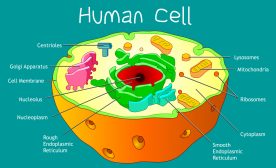Table of Contents
Definition
noun
plural: nucleoporins
Any of the family of porins that make up the nuclear pore complex
Details
Overview
The cell nucleus is the organelle of the eukaryotes responsible for maintaining the integrity of DNA and for controlling cellular activities such as metabolism, growth, and reproduction by regulating gene expression. It is a double-membraned organelle and this double membrane is referred to as nuclear envelope (also called nuclear membrane, plasmalemma, sor karyotheca). The nuclear envelope surrounds most of the eukaryotic cell’s genetic material as opposed to the genetic material of the prokaryotes that is not membrane bound. The nuclear envelope is a lipid bilayer and has many perforations. These perforations are called nuclear pores. Each nuclear pore is formed by the nuclear pore complex, the assembly of nucleoporins.
Features
The nucleoporins are the protein units of the nuclear pore complex. They form the nuclear pore where biomolecules may pass through it. Thus, nucleoporins forming a pore when they aggregate into a complex aid in the transport of biomolecules into and out of the nucleus. There are at least 456 nucleoproteins that make up the nuclear pore complex. The resulting nuclear pore is octagonal in shape, measures about 9 nm in diameter and with a depth of about 200 nm, and spans the nuclear envelope.
Types
The nucleoporin family is comprised of proteins involved in the formation of the nuclear pore complex. The nucleoporin 62 is the most abundant type of nucleoporins. Other examples of nucleoporins are nucleoporin 35, nucleoporin 37, nucleoporin 43, nucleoporin 50, nucleoporin 54, nucleoporin 85, nucleoporin 88, nucleoporin 93, nucleoporin 98, nucleoporin 107, nucleoporin 133, nucleoporin 153, nucleoporin 155, nucleoporin 205, nucleoporin 210, etc. They are named according to their molecular weight in kilo Daltons. Many of them contain solenoid protein domains.
Common biological reactions
Common biological reactions
The presence of the nuclear envelope prevents the easy passage of large molecules (e.g. proteins and RNA) into and out of the nucleus. Although the nuclear envelope is perforated with nuclear pores, large molecules would still need a nuclear transport mechanism in order to enter and exit the nucleus. Small particles (< ~30-60 kDa), such as ions, can pass through the nucleus by passive transport. However, cargo proteins and RNAs that need to be transported require importins and exportins to enter and exit the nucleus, respectively. On one hand, the cargo binds with the importin in the cytoplasm, and then moved into the nucleus through the nuclear pore. On the other hand, the cargo binds with the exportin inside the nucleus, and then moved outside the nucleus via the nuclear pore. Nuclear transport needs energy to proceed. Thus, GTPases (e.g. Ran enzyme) help by hydrolyzing GTP (guanosine triphosphate) so that energy would be released in the process. The energy released would be used to dissociate the cargo from the importins and to bind the cargo to the exportins.
Biological functions
Nucleoporins serve as the structural unit of the nuclear pore complex that is involved in the entry and exit of biomolecules across the nuclear envelope. A nuclear pore complex can translocate about 60,000 protein molecules per minute.
Supplementary
Etymology
- nucleo- (nucleus) + porin (pore)
Abbreviation
Further reading
See also
- nucleus
- nuclear envelope
- nuclear pore
- nuclear pore complex
© Biology Online. Content provided and moderated by Biology Online Editors







